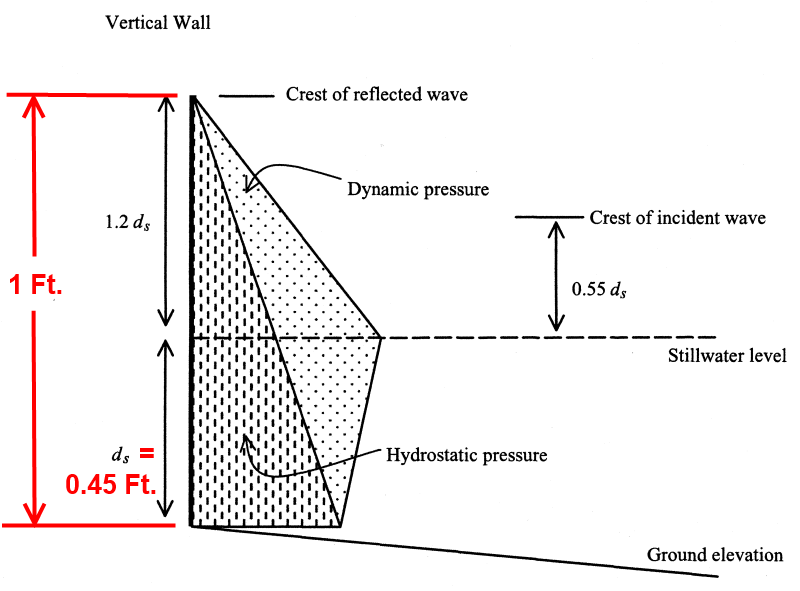Prestressed Guy
Structural
I am working on a very small bulkhead and the AHJ is requiring that it be designed for Flood Zone V. The wall is a freestanding log bulkhead with a 1' exposed height and is 50' shoreward of the high tide line so it almost never gets any water on it. The only time that the water gets there is at extreme tides combined with wind waves. The property owner says that has happened only once in the last 20 years. the main function of this wall is to provide a demarcation between the beach sand/native vegetation and his lawn.
How do you calculate the load on the wall in these conditions? All of the calculations in ASCE-7 section 5.4 deal with ds with is the local still water depth and they do not seem to apply to a wall that is normally high and dry.
How do you calculate the load on the wall in these conditions? All of the calculations in ASCE-7 section 5.4 deal with ds with is the local still water depth and they do not seem to apply to a wall that is normally high and dry.

![[idea] [idea] [idea]](/data/assets/smilies/idea.gif)
![[r2d2] [r2d2] [r2d2]](/data/assets/smilies/r2d2.gif)
![[noevil] [noevil] [noevil]](/data/assets/smilies/noevil.gif)
